Benjamin Bross
Decoding Complexity-Rate-Quality Pareto-Front for Adaptive VVC Streaming
Sep 27, 2024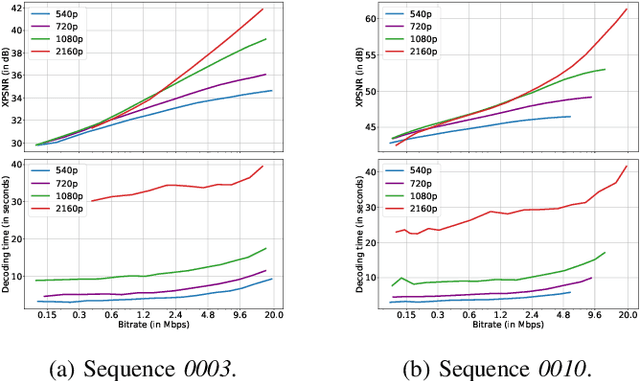
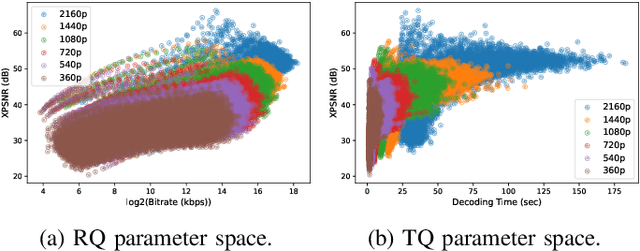
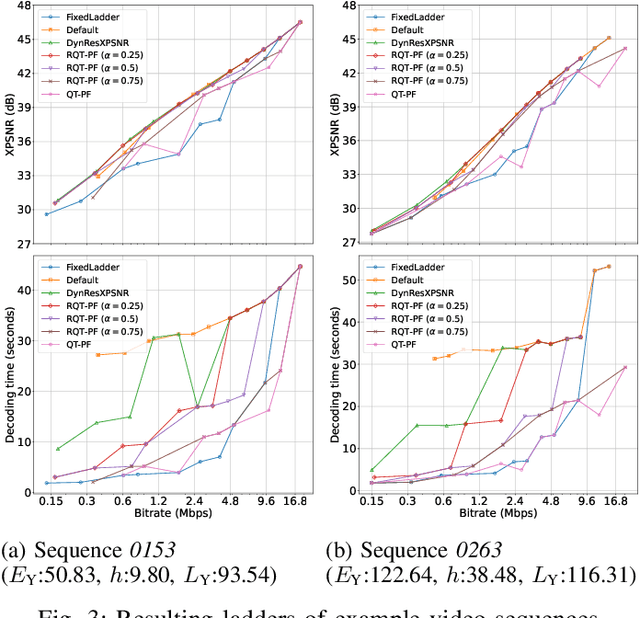
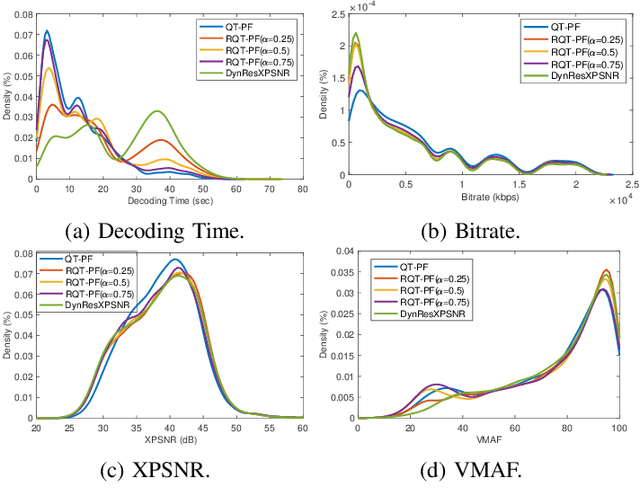
Abstract:Pareto-front optimization is crucial for addressing the multi-objective challenges in video streaming, enabling the identification of optimal trade-offs between conflicting goals such as bitrate, video quality, and decoding complexity. This paper explores the construction of efficient bitrate ladders for adaptive Versatile Video Coding (VVC) streaming, focusing on optimizing these trade-offs. We investigate various ladder construction methods based on Pareto-front optimization, including exhaustive Rate-Quality and fixed ladder approaches. We propose a joint decoding time-rate-quality Pareto-front, providing a comprehensive framework to balance bitrate, decoding time, and video quality in video streaming. This allows streaming services to tailor their encoding strategies to meet specific requirements, prioritizing low decoding latency, bandwidth efficiency, or a balanced approach, thus enhancing the overall user experience. The experimental results confirm and demonstrate these opportunities for navigating the decoding time-rate-quality space to support various use cases. For example, when prioritizing low decoding latency, the proposed method achieves decoding time reduction of 14.86% while providing Bjontegaard delta rate savings of 4.65% and 0.32dB improvement in the eXtended Peak Signal-to-Noise Ratio (XPSNR)-Rate domain over the traditional fixed ladder solution.
Convex-hull Estimation using XPSNR for Versatile Video Coding
Jun 19, 2024Abstract:As adaptive streaming becomes crucial for delivering high-quality video content across diverse network conditions, accurate metrics to assess perceptual quality are essential. This paper explores using the eXtended Peak Signal-to-Noise Ratio (XPSNR) metric as an alternative to the popular Video Multimethod Assessment Fusion (VMAF) metric for determining optimized bitrate-resolution pairs in the context of Versatile Video Coding (VVC). Our study is rooted in the observation that XPSNR shows a superior correlation with subjective quality scores for VVC-coded Ultra-High Definition (UHD) content compared to VMAF. We predict the average XPSNR of VVC-coded bitstreams using spatiotemporal complexity features of the video and the target encoding configuration and then determine the convex-hull online. On average, the proposed convex-hull using XPSNR (VEXUS) achieves an overall quality improvement of 5.84 dB PSNR and 0.62 dB XPSNR while maintaining the same bitrate, compared to the default UHD encoding using the VVenC encoder, accompanied by an encoding time reduction of 44.43% and a decoding time reduction of 65.46%. This shift towards XPSNR as a guiding metric shall enhance the effectiveness of adaptive streaming algorithms, ensuring an optimal balance between bitrate efficiency and perceptual fidelity with advanced video coding standards.
Optimized Decoding-Energy-Aware Encoding in Practical VVC Implementations
Jun 27, 2022



Abstract:The optimization of the energy demand is crucial for modern video codecs. Previous studies show that the energy demand of VVC decoders can be improved by more than 50% if specific coding tools are disabled in the encoder. However, those approaches increase the bit rate by over 20% if the concept is applied to practical encoder implementations such as VVenC. Therefore, in this work, we investigate VVenC and study possibilities to reduce the additional bit rate, while still achieving low-energy decoding at reasonable encoding times. We show that encoding using our proposed coding tool profiles, the decoding energy efficiency is improved by over 25% with a bit rate increase of less than 5% with respect to standard encoding. Furthermore, we propose a second coding tool profile targeting maximum energy savings, which achieves 34% of energy savings at bitrate increases below 15%.
A Complete End-To-End Open Source Toolchain for the Versatile Video Coding Standard
Jul 28, 2021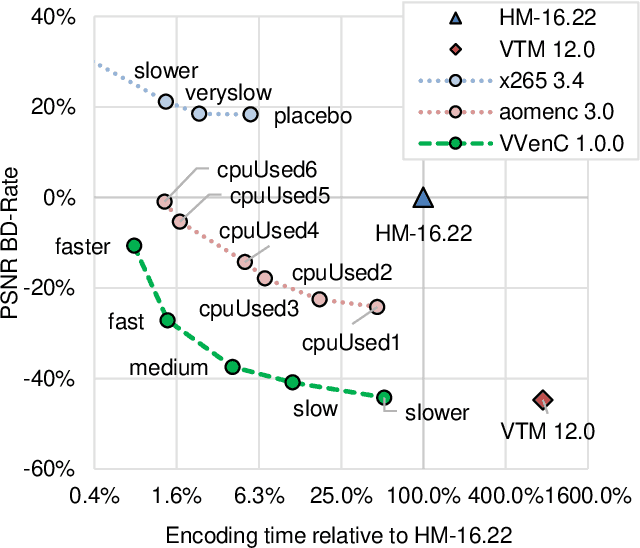
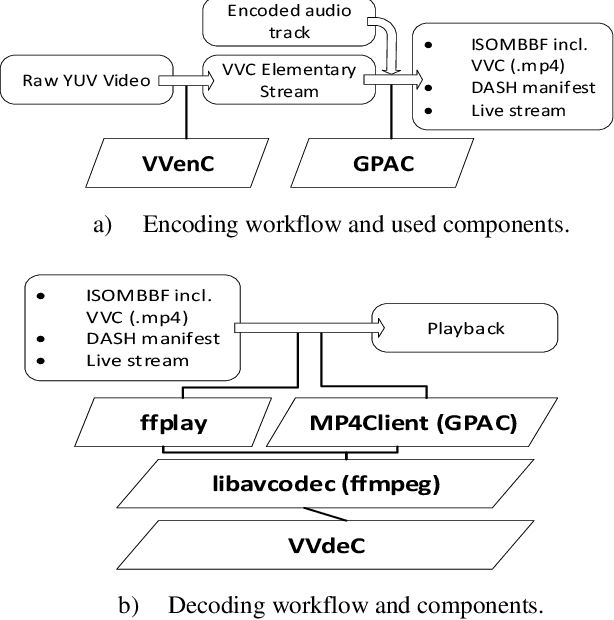
Abstract:Versatile Video Coding (VVC) is the most recent international video coding standard jointly developed by ITU-T and ISO/IEC, which has been finalized in July 2020. VVC allows for significant bit-rate reductions around 50% for the same subjective video quality compared to its predecessor, High Efficiency Video Coding (HEVC). One year after finalization, VVC support in devices and chipsets is still under development, which is aligned with the typical development cycles of new video coding standards. This paper presents open-source software packages that allow building a complete VVC end-to-end toolchain already one year after its finalization. This includes the Fraunhofer HHI VVenC library for fast and efficient VVC encoding as well as HHI's VVdeC library for live decoding. An experimental integration of VVC in the GPAC software tools and FFmpeg media framework allows packaging VVC bitstreams, e.g. encoded with VVenC, in MP4 file format and using DASH for content creation and streaming. The integration of VVdeC allows playback on the receiver. Given these packages, step-by-step tutorials are provided for two possible application scenarios: VVC file encoding plus playback and adaptive streaming with DASH.
Open GOP Resolution Switching in HTTP Adaptive Streaming with VVC
Mar 11, 2021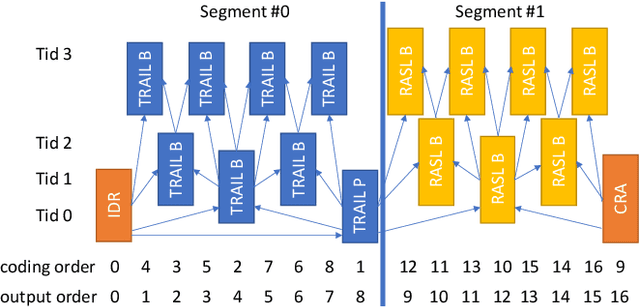
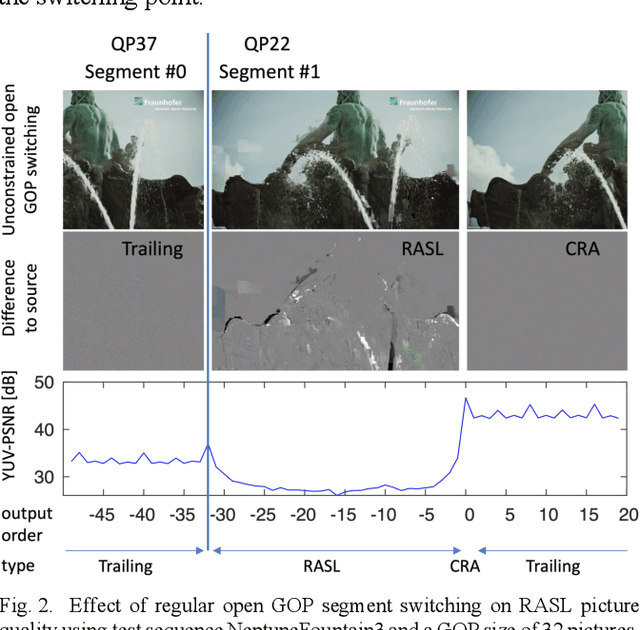
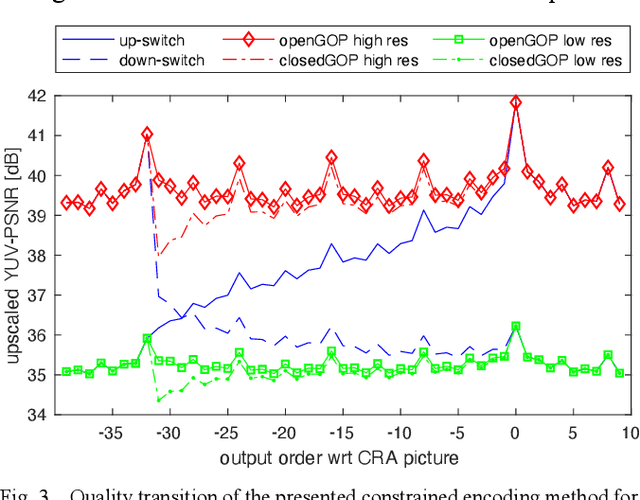
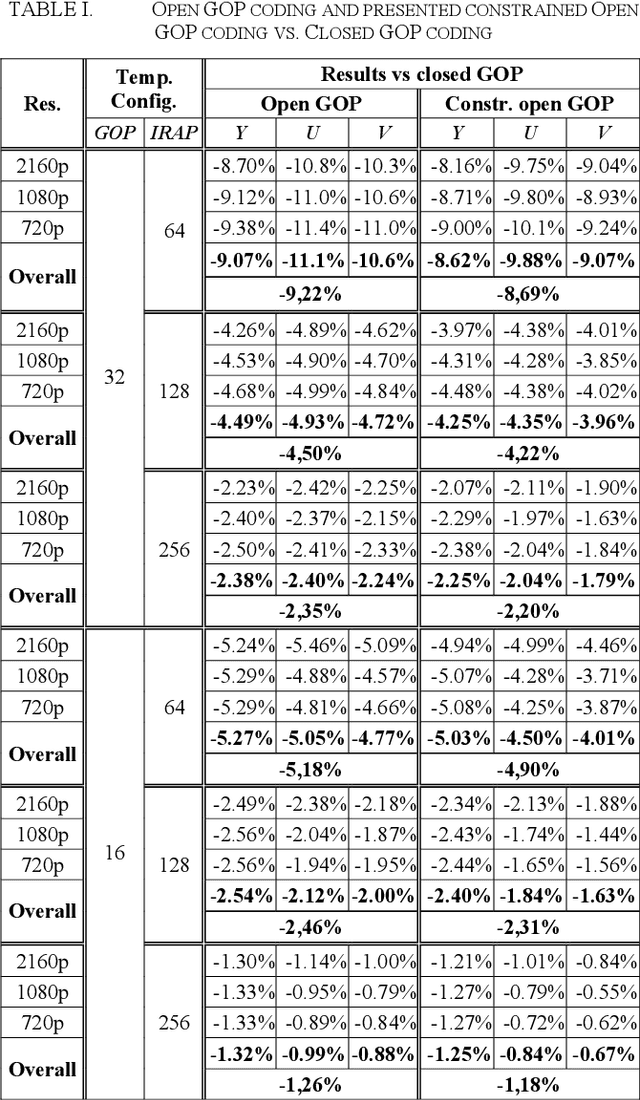
Abstract:The user experience in adaptive HTTP streaming relies on offering bitrate ladders with suitable operation points for all users and typically involves multiple resolutions. While open GOP coding structures are generally known to provide substantial coding efficiency benefit, their use in HTTP streaming has been precluded through lacking support of reference picture resampling (RPR) in AVC and HEVC. The newly emerging Versatile Video Coding (VVC) standard supports RPR, but only conversational scenarios were primarily investigated during the design of VVC. This paper aims at enabling usage of RPR in HTTP streaming scenarios through analysing the drift potential of VVC coding tools and presenting a constrained encoding method that avoids severe drift artefacts in resolution switching with open GOP coding in VVC. In typical live streaming configurations, the presented method achieves up to -8.7% BD-rate reduction compared to closed GOP coding while in a typical Video on Demand configuration, up to -2.4% BD-rate reduction is reported. The constraints penalty compared to regular open GOP coding is 0.53% BD-rate in the worst case. The presented method will be integrated into the publicly available open source VVC encoder VVenC v0.3.
 Add to Chrome
Add to Chrome Add to Firefox
Add to Firefox Add to Edge
Add to Edge